We just wrapped up our Spring Break. Last year, as you might remember, we experimented with doing a week worth of mostly school-age programming. We had mixed results, but I’m glad we tried it. You can read all about what we did during that week here. But I was going to be out of town this Spring Break (along with another staff member) so we didn’t really have the staff to do this kind of programming again. AND YET! I still loved offering something for our families or drop-ins who were in town and looking for something to do and somewhere to be. I want them to think of us year round, after all, and that’s what programs are there for.
So, inspired by some ideas I’d seen floating around Twitter, I whipped up two quick passive programs for families and kids to do over the course of the week in their own time. All together these took a few hours to create and less than an hour or so to set-up. The results were more than worth it. We had dozens and dozens of families and kids on their own participating over the course of the week for very little staff time. Here’s how they worked.
1. The Great Character Hunt! (geared at families and kids aged 2-6, but open to all)
I printed out nine characters from famous picture books (and here were some complications – I wanted to make sure there were female characters represented and characters of color too … easier said than done, eh?) and then had a fellow staff member hide them around Youth Services. Participants got sheets at the front desk and then walked around looking for the characters (maybe even learning about picture books and becoming more familiar with Youth Services as they walked around…) and recording their locations. When they brought the sheets back they got small prizes: a scratch n sniff bookmark, a plastic pirate treasure coin, and a color your own sticker. (Nothing big and all stuff we already had lying around.) They also got to sign their name to the I COMPLETED THE GREAT CHARACTER HUNT! poster, which let us track their work and gave us a great in-house visual. Let’s take a look at some pictures!

Madeline hid out by the doorway of our dollhouse! (notice in the next pic how she looks almost like a doll for the house…)
Where’s Waldo in our dino mural?
Pigeon was located on puzzle stand – a good place for families who play with puzzles to see him and ask what he was doing there, inviting them into the hunt!
Max blended in with the background when he went on the window.
Here are the signed complete sheets: you’ll notice the book covers from where our characters are from. And can you spy Peter hiding by the last place someone might look?
2. The Epic Quest (for the older kids, suggested for ages 7-12)
This was a basic scavenger hunt that required kids to use the catalog and explore our resources. They had to physically go to some locations (“The library subscribes to many magazines! Find one and write the name down.” Maybe you didn’t know there WERE youth magazines!) and just use the catalog for other questions (“What is the name of the author of the book Better Nate Than Ever?”) which involved not only using the catalog but then figuring out how to decode the information from the catalog.
This worked well with the character hunt because it also had the look and find elements but felt “older” because there was catalog work involved. When they completed, they received the same simple prizes and got to sign their own sheet. (as you can see above.)
Want to do this at your library? I can’t recommend it enough! And to get you started here are examples of the sheets we used. They’re linked through Google Docs, feel free to modify and save them for your own work. (if you want Word copies, email me and I’ll be happy to send them along.)
Great Character Hunt Key
(helpful note: the exact same images on this sheet were what I used for the hidden images. No need to send them looking for another version. Unless you wanted to make it a little more challenging! Participants received a sheet with the names of each character with a line next to it for them to write down location. These were the character key sheets they took on the hunt with them for recognition and were encouraged to return – but we definitely could have modified them into TAKE US HOME TO READ ALL OUR BOOKS! bookmarks/flyers. Next time!)
Epic Quest Questions
The second passive display also ties into National Poetry Month! I think I saw someone mention or allude to something along these lines in the #titletalk chat (you should definitely participate in TitleTalk, it’s one of my most favorite Twitter chats) about poetry and I ran with it the very next day. I wasn’t sure how it was going to work, but I wanted to give it a try. What is it?
A POETREE!
Yup, we basically cut out some tree shapes out of brown butcher paper, cut out some leaves out of green cardstock, wrote some poems on them, and then left the shapes out for people to compose their own poem/leaves and hang them up. The very day the trees went up I immediately talked two teenagers into sitting down and writing the first poems for us. The concept is so simple to grasp, it looks so cool with a set of poem/leaves already up, the leaves are RIGHT THERE – well, it’s hard to resist!
They’ve been up for a few weeks and we’ve seen lots of fun stuff as our trees have gained leaves! Silly haikus and rhymes from teenagers. Meditative poems about nature and leaves from middle schoolers and high schoolers. And, one of my favorites, parents sitting down and talking about poetry, forms of poetry, rhythm, rhyme, and figurative language with their very young children and writing poems together. (well, maybe the parents do most of the writing and the kids say a few words or phrases, but they do it together and it’s pretty darn amazing.) The POETREES themselves frame one of our larger display shelves, so it’s also a great way to spotlight poetry titles and get them circulating. Pictures, I say!
One tree from the distance (this one is mostly full of poems we wrote out, but has some from patrons too.)
 This tree is mostly patron poems, but has a few others scattered in AND our Explanation Apple!
This tree is mostly patron poems, but has a few others scattered in AND our Explanation Apple!
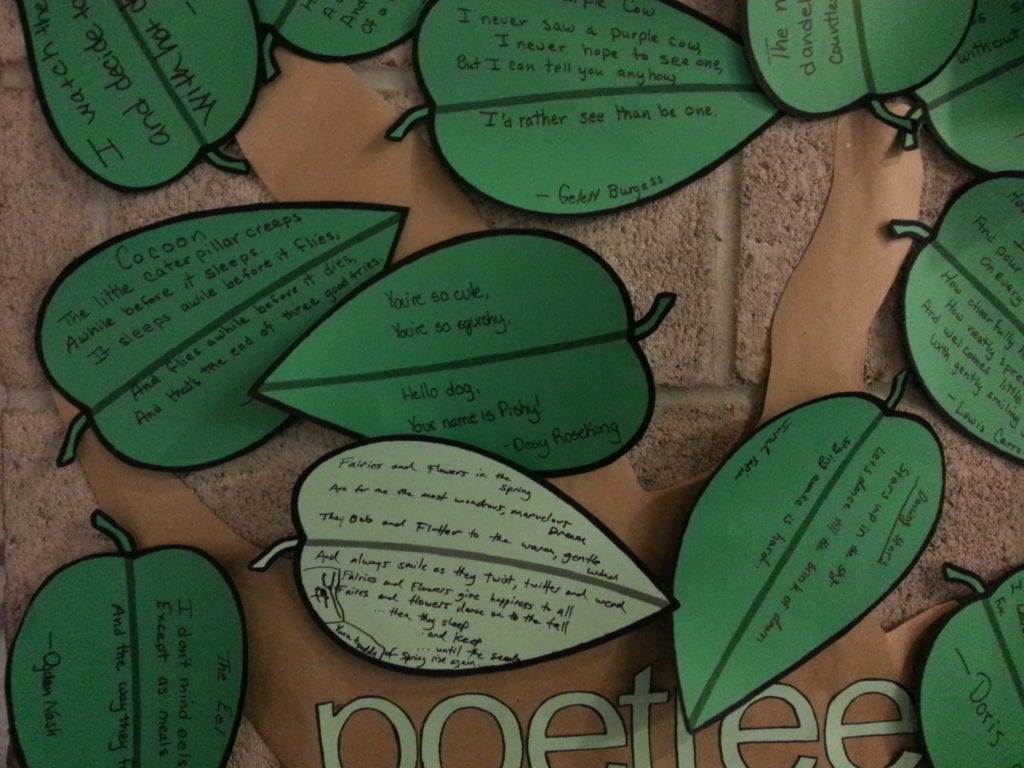 Here’s an up-close of some leaves – note the one with little kid scrawl is one that the parent and child wrote together!
Here’s an up-close of some leaves – note the one with little kid scrawl is one that the parent and child wrote together!
More up close of patron poems of all ages!
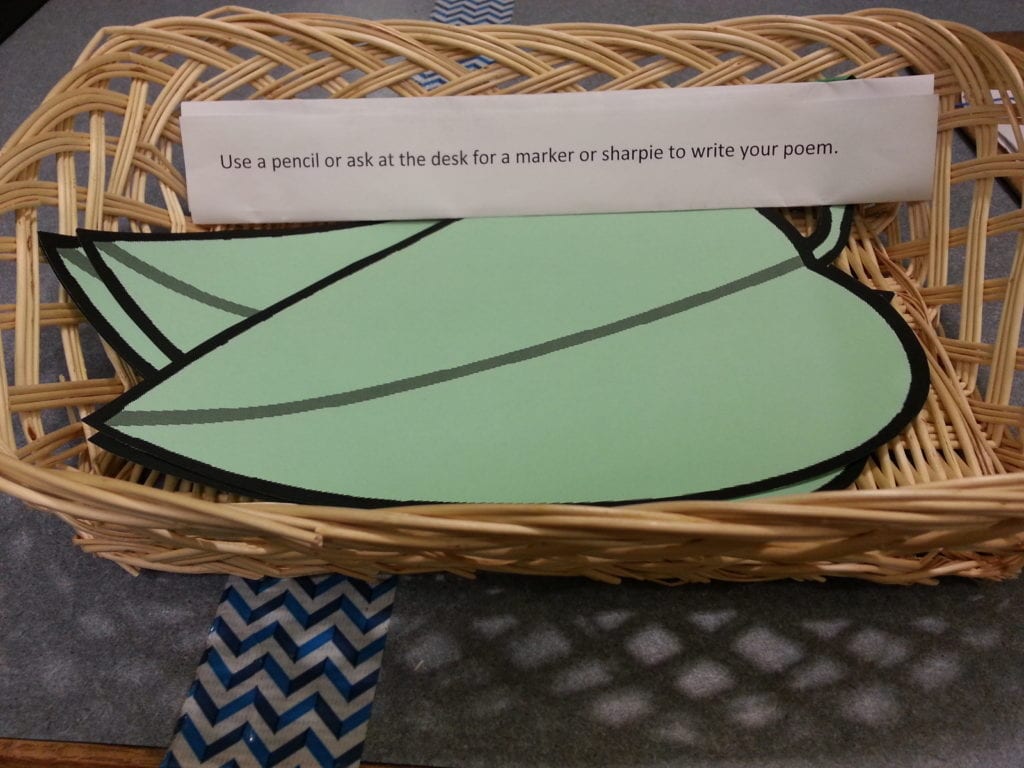 Our leaves basket for patrons.
Our leaves basket for patrons.
The poetrees in full bloom! Note the shelf full of poetry books between them.
There you have it! Two quick programs with not a ton of staff time involved (though the hunt and promoting it did not run itself!) but with HUGE returns. Both of these programs/displays gave patrons a chance to participate in their own time, create together, add something fun to the library’s landscape, and learn about the library and our resources. (as well as build early literacy and information literacy skills, don’t forget that part!) Overall: big successes we learned from and definitely want to repeat, in different ways, throughout the year!
Have you done this or any kind of passive programming at your library? What worked? What didn’t? How do your patrons like passive programming and how do you tie it into larger events like Spring Break or National Poetry Month? Are there any questions or details about these displays/programs I didn’t answer or that you want more info/samples about? Let’s talk about it all! (Comment here, send me an email, or talk with me on Twitter!)


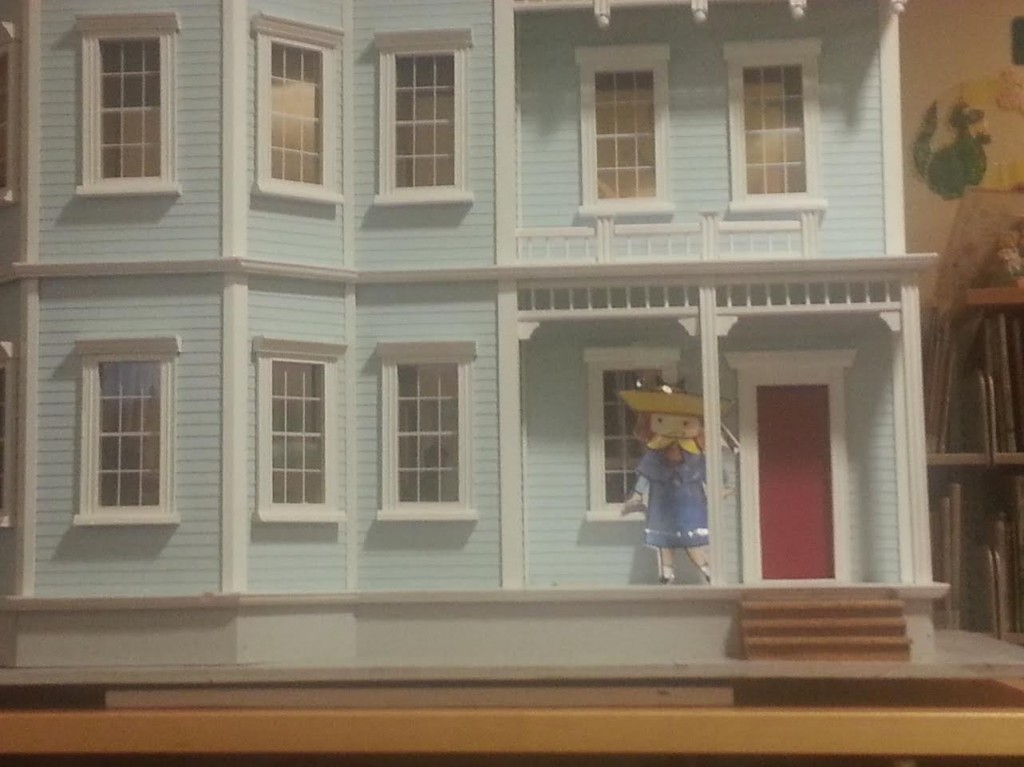
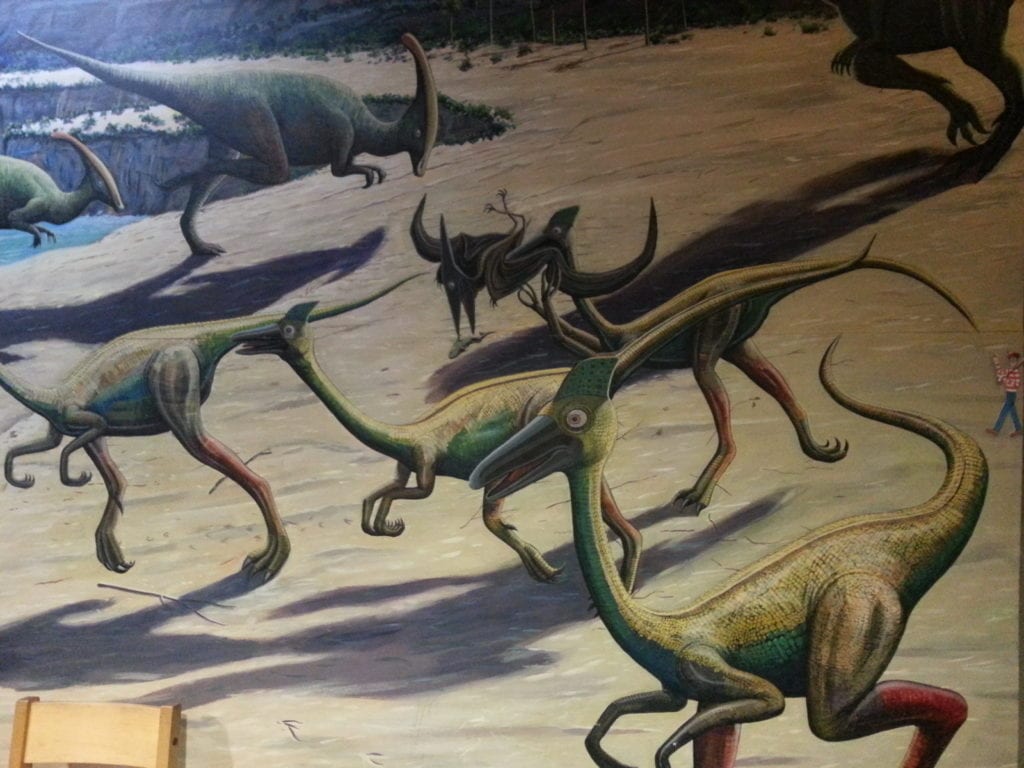
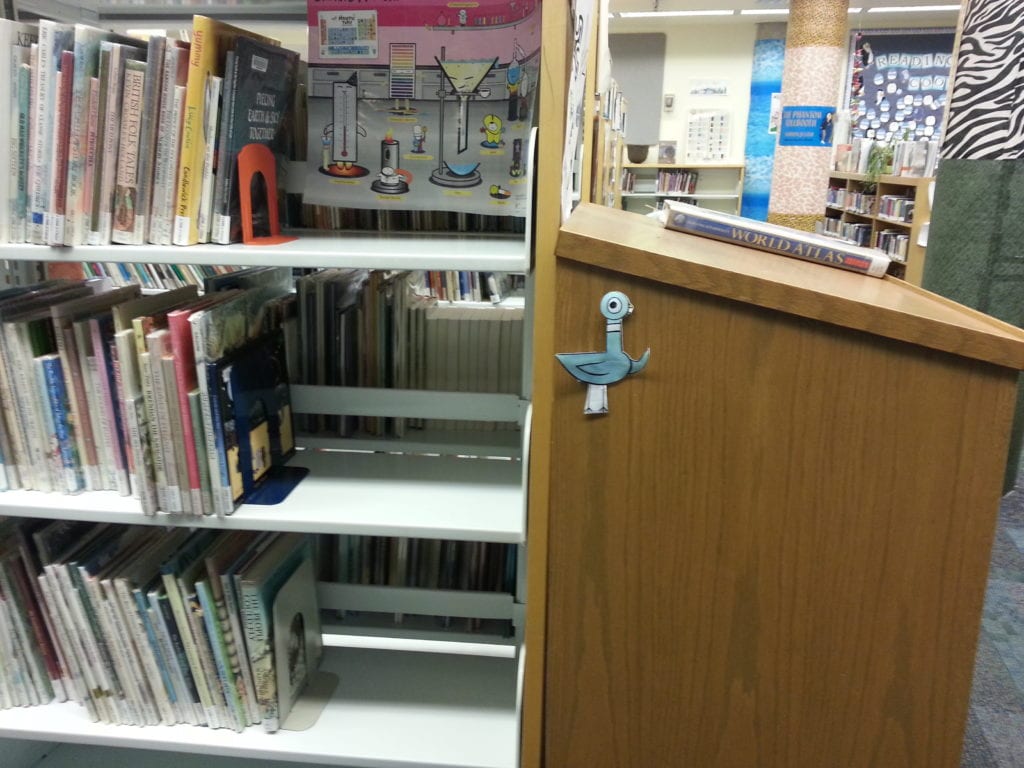
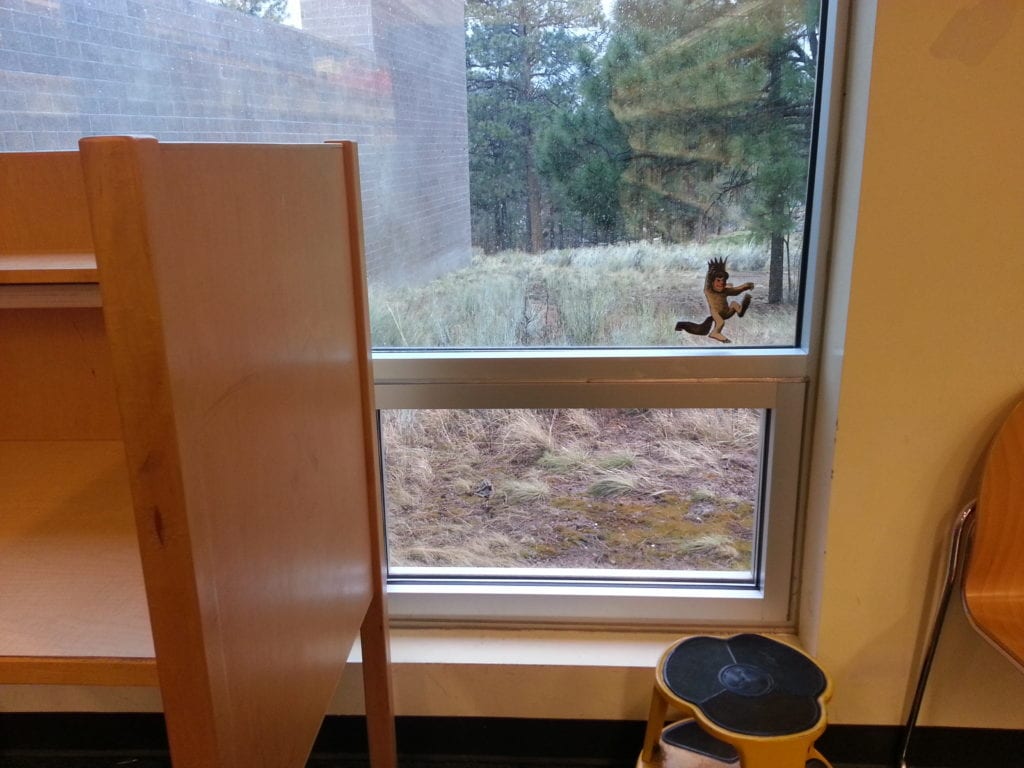
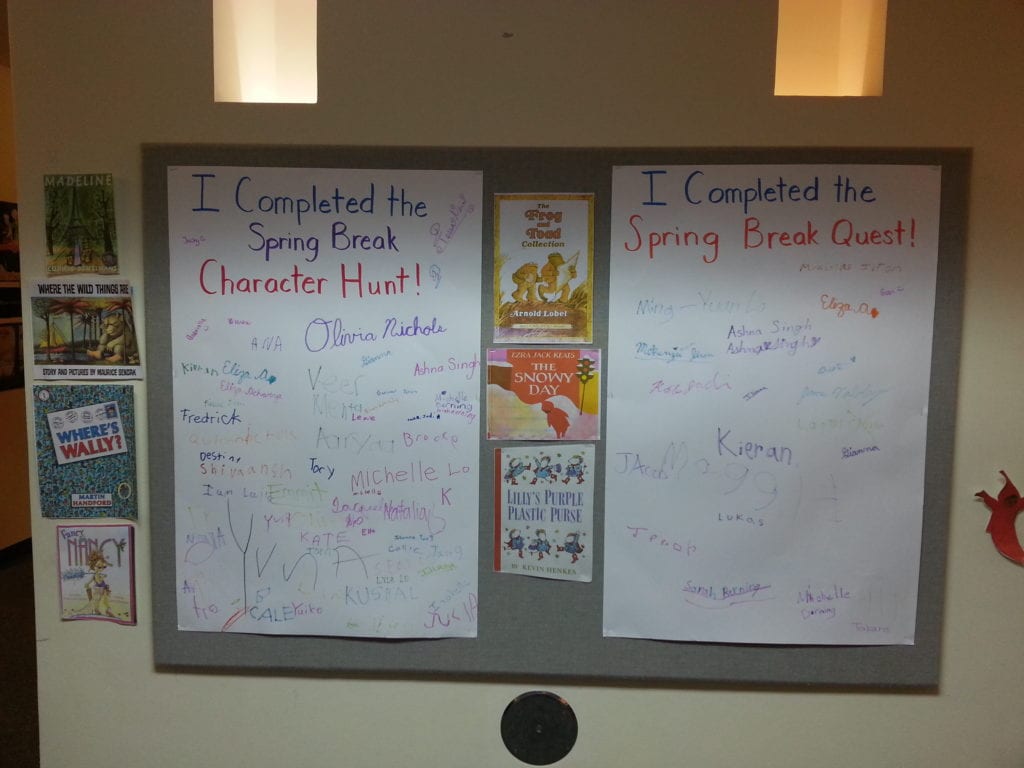


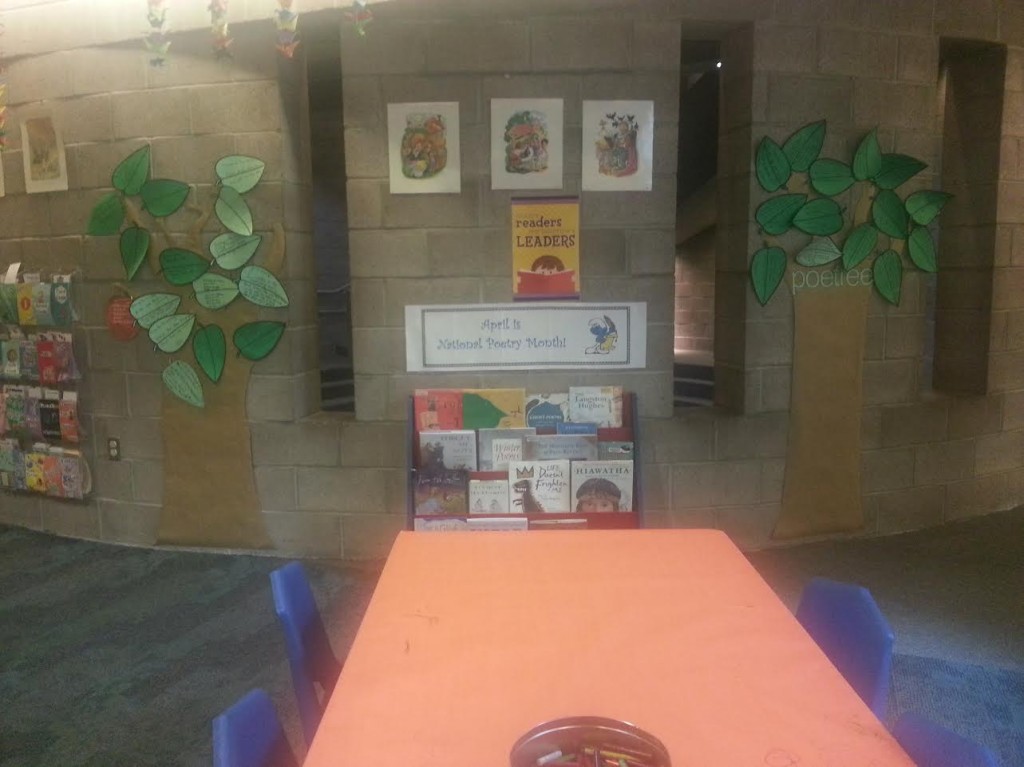

I LOVE this and I will totally copy both of those. We did spring break programming this year, but we had pretty low attendance, so doing some passive programming during school breaks would definitely be easier. Thanks for the ideas, Angie!
Wonderful ideas! We will definitely be using your Great Character Hunt idea in the very near future! If you have any samples you’d be willing to share (the key, for example), that’d be great! Thanks so much.
This is such a fantastic idea! I love the poetree.